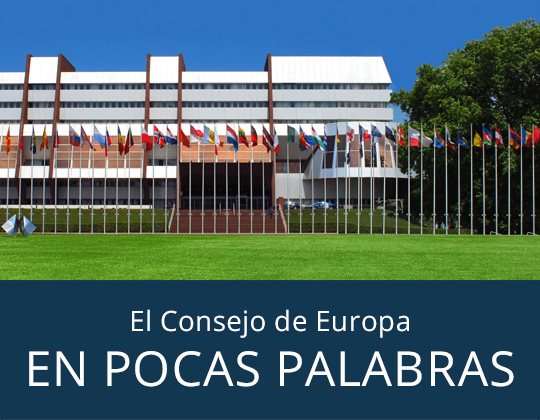La bandera Europea

Desde su fundación, en 1949, el Consejo de Europa es consciente de la necesidad de dar a Europa un símbolo con el que sus ciudadanos puedan identificarse. El 25 de octubre de 1955 la Asamblea Parlamentaria aprobó unánimemente un emblema que consistía en un círculo de estrellas doradas sobre un fondo azul. El 9 de diciembre de 1955 el Comité de Ministros de la Organización adoptó la bandera tachonada de estrellas, que se lanzó oficialmente el 13 de diciembre del mismo año en París.
Un símbolo para toda Europa
En 1983 el Parlamento Europeo adoptó a su vez la bandera creada por el Consejo de Europa, y recomendó que se convirtiera en el emblema de la Comunidad Europea. El Consejo Europeo aprobó esta propuesta en junio de 1985. Con el consentimiento del Consejo de Europa, las instituciones comunitarias comenzaron a utilizar la bandera a principios de 1986.

Desde entonces, la bandera europea se ha convertido en el símbolo de un proyecto político común, que une a todos los europeos más allá de su diversidad.
 Historia de la bandera europea
Historia de la bandera europea
 Imagina la bandera europea
Imagina la bandera europea
The European flag we know today—a circle of twelve gold stars on a deep blue background—was chosen for its perfect blend of neutrality, timelessness, and simplicity. Its design avoids religious or national symbols, embracing universal ideals of unity and harmony. The number 12, a symbol of perfection and stability, ensures the flag remains unchanged regardless of Europe’s growth. And its clean, elegant design is instantly recognisable and easy to reproduce.
But did you know this iconic flag was nearly completely different? The journey to its final form involved several intriguing alternatives. Let’s explore the fascinating alternative designs that could have represented Europe!
Alternative designs for the European flag
The journey to the European flag’s final design—a circle of twelve gold stars on a serene blue background—this iconic symbol, was filled with creative possibilities and alternative designs, each with its own unique vision for representing Europe’s unity in diversity.
Let’s explore some of the alternative ideas that were considered!
Cross designs
Some of the early ideas featured a gold cross on a blue background, reflecting Europe’s shared Christian heritage.
There were variations too, like single or multiple cross designs, but these were seen as potentially divisive in such a religiously diverse continent.
Stars on different backgrounds
Designs with stars on green, white, or red backgrounds were proposed.
Another concept had stars on a white background, but it felt too similar to existing national flags and lacked uniqueness.
The number of stars
Early designs featured a star for each member state of the Council of Europe (initially 15).
Concerns arose that the number would need to change as new members joined, leading to confusion.
Design by Arsène Heitz
Arsène Heitz, the designer of the final flag, originally proposed a design with a crown of stars surrounding a blue background.
Some designs included religious imagery, like references to the Virgin Mary, but these were set aside to keep the flag secular.
Circle vs. other shapes
Some proposals featured stars arranged in arcs, rows, or patterns other than a circle.
Ultimately, the circle of stars won out for its powerful symbolism of unity and equality, steering clear of any hierarchy.
Colour choices
Different colour combinations, including red, green, and gold, were tested for their visual impact and symbolism.
Blue and gold were selected for their association with peace, harmony, and historical ties to European heraldry.
Curious to see what might have been? Take a closer look at the alternative design proposals for the European flag here
Copyright
Any natural or legal person (‘user') may use the European emblem or any of its elements, subject to the following conditions of use.
Conditions of use
The use of the European emblem and/or any of its elements is allowed, irrespective of whether the use is of a non-profit or commercial nature, unless:
(a) the use creates the incorrect impression or assumption that there is a connection between the user and any of the institutions, bodies, offices, agencies and organs of the European Union or the Council of Europe;
(b) the use leads the public to believe erroneously that the user benefits from the support, sponsorship, approval or consent of any of the institutions, bodies, offices, agencies and organs of the European Union or the Council of Europe;
(c) the use is in connection with any objective or activity which is incompatible with the aims and principles of the European Union or of the Council of Europe, or which would be otherwise unlawful.
Trade mark and related issues
The use of the European emblem in accordance with the conditions in the previous section does not mean consent to registration of the emblem or an imitation thereof as a trade mark or any other IP right. The European Commission (embl@ec.europa.eu) and the Council of Europe (legal.advice@coe.int) will continue the monitoring of applications for registration of the European emblem or part thereof as (part of) IP rights, in accordance with the applicable legal provisions.
¿Sabías qué?
El Convenio antidopaje del Consejo de Europa, aprobado en 1989, es el único instrumento legal internacional en este área hasta la fecha.
¿Dónde está la sede del Consejo de Europa?






